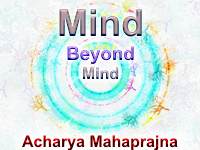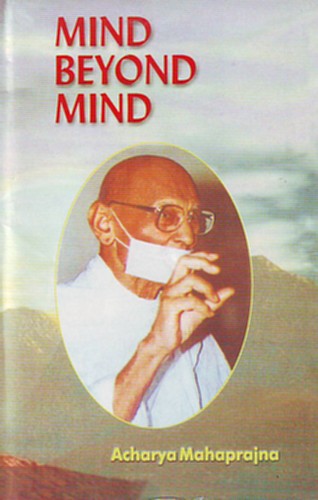
Are there only a single kind and a single procedure of the recitation of Namaskara Mantra or are there several kinds and procedures?
Once I thought of writing a book on one hundred kinds of reciting the Namaskara Mantra. I began it, but could not complete it. There are different forms of its recitation with reference to the curing of diseases, attaining particular kinds of mental states, establishing particular kinds of contacts etc.
I once tried to concentrate on the breath and became unconscious after one and a half hours or so of concentration. Does this concentration lead the practitioner to the Manomaya Kosa or Jada Samadhi? If it leads to Jada Samadhi, is it not a venture in the wrong direction?
This concentration belongs not to the mental plane (Manomaya Kosa), but to the plane of Prana (Pranamaya Kosa). The practice is aimed at changing the direction of Prana (Vital Force). It produces a vacuum in the practitioner.
This state is a kind of Jada Samadhi. It produces at least one effect. It gives a little relaxation to the body, reduces its activities and stores energy. But it is not a means of expanding consciousness. It is conscious Samadhi (Jagrata Samadhi), which expands consciousness. The practitioner of conscious Samadhi has got to be constantly self-watchful. The Acaryas have emphasised the need for the monk to be self-watchful even during sleep. There are some who sleep even during the waking state and some who keep waking even during a state of sleep. The monk should not be lost into a deep and totally unconscious slumber. His sleep should be a very light sleep. The practitioner should not be totally lost to himself during the state of concentration or meditation. He has to be constantly conscious of his existence. This is Jagrata Samadhi. What is essential is that the mind should be poised towards a particular direction, only. It should not cease to function and should not lose its consciousness. It should become a self contained, conscious, active, and knowing entity. Instead of remaining diffused it should become collected. This act of collecting is called Samahara in Sanskrit grammar. When we say 'from A to Z' we mean the entire alphabet. The practitioner should have the consciousness of the entire perspective of the mental processes he is going through.
Samahara is the concentration of the entire mind on a particular thought point. A concentrated and collected mind will possess knowledge and self-consciousness. It will not lapse into a state of unconsciousness. Is such a state, it will produce energy which will split the mind atoms and keep the light of consciousness shining. This is the royal road to enlightenment. Jada Samadhi does not lead to enlightenment, but it may be, to some extent, beneficial on the bodily plane. The bases of Jada and Jagrata Samadhis are different from each other. They are two separate states.
Is there awareness of external events and do the sense organs also continue to be somewhat active in the state of Jagrata Samadhi? What should the practitioner do in such a situation?
In a state of concentration the practitioner sometimes remains aware of events happening outside the mind. For example, he hears sounds. But once concentration has reached its culmination, this awareness disappears. I have personally experienced such a state of concentration. I intentionally chose a place of disturbance and noise to concentrate in. I did so in order to feel how deep my concentration was. I did hear sounds and sometimes became aware of their meaning also. At times I heard words and sounds without being aware of what they meant. Sometimes I did not hear any sound whatsoever. Let all this happen. It will cease once concentration has reached its deepest point.
You have stated that the actions we do on the Manomaya Kosa (mental plane) are the only real actions. You have also cited the example of saint Raidasa. But there are a number of actions we do with good intentions although they are not done on the mental plane. Does a religious minded person derive any benefit from such actions done with a religious motive, although they are not actions done on the mental plane?
A practitioner who does Sadhana on the plane oi Prana acquires certain miraculous powers. But these powers do not change his nature and character. You might have heard of Sadhakas and sadhus who burnt things in no time by their magical powers. The curses they uttered and the blessings they gave proved to be effective. All such things happen only on the plane of Prana. People who do such things are not free from mal intentions, anger, false pride, deceit, jealousy etc.
They do not possess a high level of character, because they have only mastered Prana and not the mind. Their character has not undergone any spiritual change. But a Sadhaka who performs sadhana on the mental plane begins to undergo a spiritual change in his character. His desires and predilections begin to disappear and he reaches a high level of character. All this happens on the mental plane. Of course, there are varieties of spiritual change. A disciplined character enables a practitioner to lift himself up to the mental plane. One with a strong sense of Vairagya (detachment) can also do so. He needs neither meditation, nor concentration on the breath nor any other such thing. The feeling of detachment alone helps him. He develops a natural expansion of the Manomaya Kosa. He masters the technique of concentration. There are other means also of attaining this state. They are self-discipline, meditation, firmness of purpose, resolution, a feeling of detachment etc. One may adopt any of these means. The strength born of his earnestness enables him to achieve his aim and to bring about a change in his spiritual character. There were men who had been passionate, lecherous, and reckless. Suddenly something happened in them, which brought about a complete change in the evil course of their lives. Such changes may be accidental or they may be due to a vigorous pursuit of sadhana ox they may have happened due to self-discipline, or a feeling of detachment or meditation. There are innumerable means of enlightenment. There is no royal road to spiritual success. What is material is to open the door leading to the goal.
What are the other means for achieving the goal besides external means?
There are several means. One of them is the diversion of the mind towards a particular direction. If you persist in sadhana a stage will come when the mind will cease to function. And yet there will be several more stages to be gone through before the goal is achieved.
You have stated that religious activities can bear fruit only when the concentrated mind has touched the mental plane (Manomaya Kosa). Do penances and fasting by themselves produce any good result?
Penances and fasting are not totally useless. Performed in the correct way, they do produce good results. Recently a Russian scientist performed an experiment in arousing the Kundalini (a switchboard of psycho-somatic energy in the human body). The energy generated by the Kundalini can be manipulated and utilized in the service of what the Russian scientist called Bio-radio-communication. The experiment was concerned with this kind of communication. The scientist became a samyasi. He took to fasting and did not even take water during the fasting.days. He practised Pranayama (breath control), Dhyana (meditation) and Asanas (physical postures). He tried self-purification. He experienced a sudden jerk and his consciousness took a sudden turn and retreated within.
Take the case of ‘Kalavati of Ramamandi'. She is totally illiterate. She performed penances and meditation and reached that stage of sadhana where a complete change of self happens. She began to command miraculous powers. She feels that there is some writing before her and begins to read it. Other miracles also happen. Whether fasting is good or bad is a minor question. But before you start fasting, you must ascertain which objective you want to achieve. You should be clear and certain of the objective. You should be watchful of the progress you have made.
 Acharya Mahaprajna
Acharya Mahaprajna

